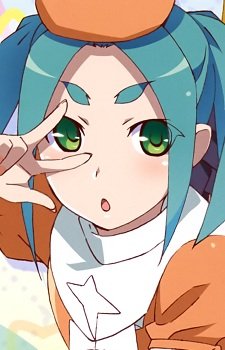
Great moments, but significant watch time may limit some viewers from starting
The strength of the show is the assortment of interesting characters. Many are well developed and have meaningful interactions with one another. The plot is definitely saucy and spicy (maybe makjang-ish?), but not particularly deep or substantive. Much of the show is predictable. The show's setting, which revolved around the family restaurant - Daddy's snack Bar - was underdeveloped. In fact, it was basically not part of the last third of the show. The show focused on family relationships and de-emphasized the work settings. Again, what makes the show worth watching is to savor quirky characters and special moments of humor, drama, and growth that make the show stand out.Because the watch time is quite long, there are stretches where the show feels boring or fluffy. You'll probably get a feel for what sections you would want to move through quickly.
Stand out acting: Lee Yoo Ri as Byun Hye Yeong felt expert. Song Ok Sook as the privileged Oh Bok Nyeo was strangely fascinating and enjoyable. Most of the time, I would not like this kind of ' mean mother-in-law' role in shows, but I just loved her in this show. Kang Suk Woo as Cha Kyu Taek was also expert in his role.
Compelling characters: I found myself loving scenes with Byun Ra Yeong (youngest daughter). Her role/acting was more one-note and over-acted at times, but the character was still compelling. Again, Oh Bok Nyeo was something I 'paid more attention to' when she was on the screen - a terrific character.
*Edited note on Jung So Min* - many will be interested in seeing her as she's a current popular star. I do like Jung So Min in other shows. Her character had a great introduction and start; it seemed like someone I would really want to keep track of throughout the show, but the character doesn't develop much and I also didn't feel the chemistry with her love interest and even her family. I don't think this is a reflection of the actress's skill, but more of the writing being 'forced' and not 'natural'. So, a Jung So Min completist may want to watch this show but it's not 'must watch Jung so Min because its so good' viewing.
Music was very effective. Not something I'll download, but great at echoing the mood of the moment. Many silly tunes.
Favorite Scene: Na Min ha really wants to go to an advanced science school, but his family finds it problematic to pay the tuition. At a bus stop, he runs into a pretty teacher working at a less competitive high school. Suddenly, Min Ha is desperate to go to the lower competition high school. His impassioned plea to his parents is such a treat.
I wouldn't rewatch the show again. Not because it's not worth it content-wise, but the time commitment is too much, and I would be skipping through half the show to watch the gems.
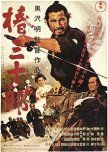
Subtle parody of 'Samurai' films
Sanjuro is considered a sequel to 'Yojimbo', but their storylines are independent. The titular character Sanjuro, we presume, is the same in both. This is a great film, but it is strongly recommended to watch Yojimbo first. The experience of watching Sanjuro is also enhanced if one has watched many of the more 'serious' classic samurai films including ones by Akira Kurosawa. Sanjuro, both the character and film, take us on a comedic journey of the world of lord, lady, gentleman warrior, and an outcast savant warrior.Compared to Yojimbo, Sanjuro's plot is less developed and achieved more quickly in pace and runtime. The main feast of the film is in the characters, mainly Sanjuro and the contrasting group of 9 men he, by serendipity, 'mentors' from the path of foolish death. To win in a socially ordered world of the samurai, one must think obliquely, act unruly even, to accomplish one's aims. The chamberlain, Mutsuta, the one with a long horse face, is another one of these people on the fringe of social acceptance, but is very clever in achieving aims through subtle strategy, and not the chivalrous wave a sword around methods. It seems Kurosawa is poking fun at socially ordered rules and brotherhoods.
Many of the role characters are terrific. The prisoner 'spy' adds much to the comedic presence of the main ensemble. The chamberlain's wife is full of witty dialogue and regard for this 'interesting' Sanjuro. The henchmen play their roles quite well. The plot exists, it seems, for Kurosawa to display the nuances and parodies of these familiar character types.
The music in the film is strong and includes some of the familiar music of Yojimbo. There is a heroic fanfare that is clearly a theme of parody/comedy. It's easily recognized.
This film is a treat for the veteran Kurosawa and/or classic Japanese cinema viewers.

Marry your daughter quickly, time may run out!
An Autumn Afternoon (1962) was Ozu's final film. It can be watched as a stand-alone or first Ozu film, but it will be more enjoyable to have seen many of Ozu's predecessor films.Ozu made so many films with seasonal themes he had to subdivide films not only by season but by time of day. Had he lived longer, we may have had an Autumn evening, an Autumn morning, etc. (I'm being playful). Yet again, we have variations on a theme by Ozu. If you've seen Ozu films and are turned off by the covering of similar plots, characters, character names, please reconsider. Amidst the similarities, there is still more ground for us to cover. Even the topic of arranged marriage, despite being presented in at least ten Ozu films, has something new for us to consider each film. We might feel rather certain that we're completely against such an antiquated practice only to wonder if it might end up being okay, for some folks, or in general. Perhaps it wouldn't suit us, we think, but then we live in a world where many marriages by choice don't work out.
There is nothing particularly new or novel with this film's plot. The increasing westernization of Japan is apparent in this film. Global products like Canada Dry can be seen. Japanese customers appear to have difficulty focusing on their meals at restaurants while taking in the local baseball game by television. Golf clubs are no longer a niche item; they now have a mature used-sale market. Refrigerators are upgraded so often that neighbors warn fellow neighbors 'Don't be in such a rush to buy a fridge; a better one will soon be on its way'.
The characters are familiar for those having experienced other Ozu films. Yet, the characters are quite enjoyable here. Chishu Ryu plays what I consider to be one of his more complex characters. He's yet again a father, widowed, and trying to set his daughter up with a marriage, but the variation here as well as subtle differences in his character are fully distinct enough to generate both new reflection and enjoyment. It's as if we've had chocolate chip cookies, then Ozu splashes in a hint of mango with the new variation. They're still chocolate cookies, but we consider what we're eating with newfound perception. Chishu is still SO familiar to his other roles that we feel his character is rather an extension or an accumulation of all prior 'fatherly' roles, but again, there's something new here in the character and acting to digest. He certainly enjoyed drinking in this film!
Okada Mariko and Sada Keiji play their roles in their 2nd consecutive Ozu film (the prior one being End of Summer) rather well. The support characters in An Autumn Afternoon are not as well-developed or convincing compared to End of Summer, but there are a few standouts. Shima Iwashita plays a background role in Late Autumn, but her entry into a starring role in an ozu film gifts us with a srong performance. She carries on the Ozu 'Noriko' spirit quite well as the daughter who won't say what they want and tirelessly take care of their father and family. The character, the "Gourd", wasn't particularly convincing, but a way to comment on what the 'father' figure would turn out to be if they didn't successfully marry off their 'daughter'. In most Ozu films, we see that the 'father' is successful in marrying off their daughters. The "Gourd" also is a tool to comment on social economic differences, and especially the awkwardness when juniors/students end up far more successful than the seniors/masters (Sensei).
Ozu gives us another one of his great ellipses/gaps in An Autumn Afternoon. After showing us the face of a potential groom, he doesn't satiate our curiosity with an image of the actual groom. We only see the bride and her immediate family.
Gender roles in society and family are well-explored in this film. And it is a bit more forward in examining WWII themes or themes of the 'soldier'. While not Ozu's best film, it was certainly a solid last film in the oeuvre.
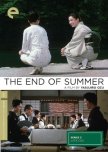
"I'm happy as I am"
Ozu's 2nd to last film, The End of Summer, starts off with a sign of changing times. We see neon lights in the nightlife of a city (Osaka it seems). One of the earliest scenes is in a posh cocktail bar. Despite these signs of 'modern' times at the time of the film (1961), Ozu brings us back to much of the classic or traditional cues his stories are primarily based in. The film takes place in classic looking towns with traditional style homes and clothing.With the End of Summer, we are treated to variations of Ozu themes yet again. Setsuko Hara plays the lead in Akiko, which was also the name of her character in the previous Ozu film, Late Autumn, but it is a different Akiko. There's another character in End of Summer, named Noriko, but it is not played by Setsuko. Ozu must have had a blast with vanilla characters and repeated names. It's as if he was saying it doesn't matter who the character is - their name, their role, their relationship - because what he wanted us to see was the common denominator of all these characters - the humanness.
Ozu films have this interesting juxtaposition of similar characters, plots (family themes), and storytelling mechanics. But the setting changes as the times change. It doesn't matter if we start off with silent films, then move on to black and white, then to color, or that it is pre-WWII or post WWII, or whatever else has changed in the external world; no, it doesn't matter because being human remains the same regardless of country, era, and place. Did neanderthals keep secrets from one another? I'd wager they did.
The similarity of Setsuko Hara's Ozu roles is not by mistake. She is not a one-note actress. Ozu purposefully keeps her character roles and temperaments limited. Hara's character Akiko, says "I'm happy as I am". It's a summary of all of Setsuko's Ozu characters. It's as if the character/Ozu are saying, "Let me stay this way in a world that is constantly changing; let me hold on to this beautiful moment, savor myself - my life- as it is right now; what more could I ask for in this life?". However, change indeed happens to us all, and keeping that happy moment forever with the accompaniments, companions, and scenes of that moment are impossible.
The music in this film was more experimental and versatile. It opens up with a Baroque music aesthetic. It certainly caught my attention more in this film compared to other Ozu soundtracks. However, some of the music is a bit jarring or doesn't quite fit the ambiance.
This film was solid, but it wasn't as emotionally impactful as other Ozu films. Many of the support roles felt insignificant or less compelling compared to other Ozu film characters. This film, while very visually stimulating, felt a bit tiresome in terms of plot and character development. There wasn't quite enough variation to Setsuko's role in this film and her character came across a bit bland. Still, it is a worthwhile film to watch for the veteran Ozu filmgoer.
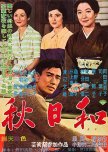
Another variation on a theme by Ozu
Late Autumn (1960) is Ozu's 3rd to last film. It is recommended not to start one's Ozu exploration with this film. Wait to have seen at least four or more Ozu films. Late Autumn is a strong film, but essentially a variation on past films. Yet, it is quite enjoyable and not boring even if this is your 20th+ Ozu film. In fact, this film is more appreciable for those that have worked their way through Ozu's films, especially the post-war ones in which Setsuko Hara is introduced. It is after viewing those prior films that we are well acquainted with Setsuko's roles in the Ozuverse.There is something about Setsuko's roles that holds a 'constancy' to a certain human temperament. Setsuko's roles are often melancholic and pure, even if they are understated. Perhaps Setsuko's roles better convey 'mono no aware' than any other Ozu characters. Her characters are wholesome, wonderful, but it is transient; while we may catch glimpses of this human character in ourselves or throughout our lives, it is a rare quality, easily squashed in our brutish world, which distorts that temperament in people that can be pure, graceful, and delicate.
Late Autumn excels in utilizing its versatile cast without any character(s) dominating the plot or screen. All are enjoyable. The trio of old men are comical together; their old-fashion and subtle mischievousness contrasts with Sasaki Yuriko's forward communication and modern woman temperament. It was refreshing to observe Yuriko's forwardness in an Ozu world full of politeness and subtlety. Her character role helps break the ice and push through a few social impasses. The exchange where the young Yuriko chews out the old men is terrific. The old men's interactions with their wives, children, and maids is also enjoyable; their loved ones seem to know the old men so well. The comedy here is that the old men try so hard to be clever but are quickly found out by all.
One of the most accomplished aspects of Late Autumn, compared to other Ozu films, is the music. In this viewing, I found little to be lacking in the music. Late Autumn's music is sophisticated, precise, and synced to the action, and does a remarkable job of conveying 'soaring happiness' or 'resigned melancholy'.
Overall, Late Autumn's presentation is bright and cheerful. It belies the more melancholic themes of the film, which are disguised through frequent interjections of comedic scheming. Ozu also limits the melancholy we can access. Several times, we see Setsuko's character, Akiko, kneeling on a mat and looking away (we cannot see her face); certainly, she is sad but the decision not to show her sorrowful face is an interesting decision.
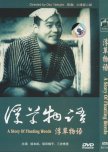
At age 31, Ozu's narrative mastery was already apparent
A Story of Floating Weeds (1934) is a silent black and white film later remade as Floating Weeds in 1959 in audio and color. I first watched Ozu's remake of "A story of Floating Weeds", then viewed the earlier version with a comparative mindset. At the time of the remake, Ozu was age 56. Floating weeds is absolutely masterful, and not surprising given the director-writer's experience and access to wider range of tools (audio, color, etc.). The precursor film, A story of Floating Weeds, is very similar to the remake. Many scenes are virtual copies. The characters, although with different names, are essentially the same.For the average movie goer, especially those without much study or knowledge on Japan, Floating weeds is by far the more accessible and recommended film. A story of floating weeds is a great watch for those that really wish to view Ozu's oeuvre and study the filmmaker or some aspect of Japanese cinema or Japanese history/society.
In viewing both films, one can sense a difference in the technological tools, the state of filmmaking, and cultural/societal influences. It's interesting, for example, to compare the few scenes of domestic violence. In the 1934 version, the hitting looks 'heavier' but there is no sound. In the 1959 version, the hitting looks 'lighter' but the sound cues make it seem more aggressive. Both viewings are disturbing, nonetheless, but it is interesting to see these scenes present with a similar outcome using different techniques; that consistency of impact demonstrates Ozu's directorial and narrative skill. He obviously knew what outcome he sought in both his 31-yr old and 56-yr old selves and could achieve it with different sets of tools.
It's remarkable that, at age 31, Ozu had a very strong grasp of techniques to achieve narrative vision. That at age 56 he felt the prior 1934 film story, itself, was well-tuned and not needing major changes is truly incredible. It seems one cannot escape the director's urge to display ego in this day and age. We have so many filmmakers who modify original story materials they work with at will, often without any logical or aesthetic advantage, simply because they can, or because they feel impotent; they want others to feel their creative stamp even more than making great film. Peter Jackson and the Lord of the Rings is a great example of that phenomenon, changing Tolkien's sources severely and utterly changing the nature of characters, plot lines, and often not for the better. If one changes something, they should improve it; if they don't improve they either have a poor ego issue or are simply not good at assessing the quality of their craft. Again, it shows great maturity and confidence that Ozu understood what made a quality narrative and there was no need to try to one-up the prequel or even himself in the remake. Great pasta is simple; do we need to inject it with novel flavors custom mixed by a pasta bartender? Are we afraid our customers will get tired of the great pasta we made to begin with?
Compared to the 1959 version, the characters of Otoki and Otaka in this film were stunning when presented side by side. I couldn't help but think they were mother and daughter. They were visually hypnotic together.
The music accompaniment - or rather the 90 minute Piano sonata - was okay. I don't know enough about accompaniments to silent films to judge confidently, but I would be intrigued to hear something else, especially something more 'Japanese'.
The 1934 version, in a comparative side by side viewing to the 1959 version, feels less full and perhaps more rushed. It works with 30 less minutes of film time. Although the plot came through just fine in the 1934 film , the 1959 version allows viewers to savor the characters and emotions more satisfactorily. Nevertheless, the Story of Floating Weeds was impactful and certainly worth a watch for the more eager Ozu viewers.

One of Ozu's best films; escape to a lazy seaside town
Floating Weeds (1959) showcases Ozu at his peak. This is a top notch film. While it might make sense to watch several other Ozu films beforehand, or even 'A Story of Floating Weeds' (from which Floating Weeds was remade), this film is also great as a first entry into Ozu's film world. Despite its PG rating, it's not an ideal film for young children.The film plot is more versatile than usual Ozu fare, with more sub-plots, and greater role character involvement. This is still a family drama, but the film's setting in a seaside town (somewhere near Seto Inland Sea) is a departure from the urban environs of many Ozu films, which take place in cities like Tokyo. And, rather than a family under a roof, we have a 'traveling family' here in the form of an acting troupe. The troupe members, like ronin - the wandering samurai of the Shogun-era, are never more than half-anchored to a place. At times, they seem desperate to put down roots but are so easily blown away by their own troubles, insecurities, or economic woes.
For those that enjoy romance, that part of this film is sufficient and enjoyable.
The sets were terrific. Ah, how much I desire to travel to a classic town where this film was made! The dark wood buildings containing eateries, post stores, and barber shops, blend seamlessly with residential space; a customer may be eating noodles at the home entrance room, and the room behind that is the cook's personal living room. This is not a town of commerce, but a place of quiet living, capturing what commerce enters their lazy cove. Business matters are lax. Having visited seaside towns before, there is something quaint, remote, and even nostalgic about these places. They are hiding from society.
The presentation of social life in this seaside town is antithetical to many Ozu settings where the industrial rush is in full display. The economic reality of such a place is not sugar coated either, but the film's place and people feel authentic, carefree, and even romantic. It's the place of quietude we've visited before that we yearn for in our busy lives, or simply never visited but instinctively know we would enjoy such a relaxing pace. In fact, the film's lack of emphasis on city, commerce, and post-war themes, as well as societal changes of the times, made this film feel like a timeless exploration of being human. It was, compared to other Ozu films with a clearer link to societal themes, refreshing to watch "Floating Weeds" without a societal themes commentary/agenda. It had a bit of an escapist feel to it, even for the veteran Ozu viewer.
Part of the humor in this film is that the troupe is not very good. But they're compelled to act together, drink together, and travel together. There's something about this group of semi-outcasts that is endearing. They are imperfect people, willing to backstab one another and then make up a week later, despite not being blood related. They don't feel like co-workers at all.
Machiko Kyo, as Sumiko, was captivating, complex, and convincing. She was, without a doubt, the star of the show despite having the 2nd most prominent role. Her earnestness and desperation is so restrained you can barely tell it is there as she masks it with jealousy, scheming, and cruel words. But we feel the slightest brush of her deepest emotion against our skin; despite a lifestyle of traveling with the wind, Sumiko craves a rooted relationship and won't give that up easily. There is a scene of reconciliation in this film that is simply masterful.
Ozu's style seems to have matured, even peaked in 'Floating Weeds'. I found the storytelling approach to be straightforward with fewer ellipses/gaps. Here, Ozu 'shows' us more of what we are thinking rather than implying action. Personally, I prefer a visual accompaniment as it is something to savor and sensually experience, rather than intellectualize alone in implied action scenes. I'm glad Ozu leaned on this more conventional approach in Floating Weeds.
A terrific film.
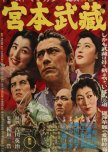
Below average plot/characters; terrific ambience and cinematography
What an interesting film trilogy to review. In fact, I feel it is easier to regard this as one film with three parts, separately released. Consider this as one cumulative review for Samurai I, II, and III (I won't provide any plot spoilers).The story takes place in the 17th century Japan. It is after the Battle of Sekigahara. Our titular character, Mushashi, leaves the small village life seeking fame as a warrior. Musashi eventually becomes a ronin, a wandering samurai, and we accompany this character on his adventures. The plot is fictional, but the character of Musashi Miyamoto is a true historical figure.
First off, I will say that I enjoyed this film, have seen it twice, and look forward to a rewatch down the road. However, it is a subpar film in terms of plot, character, acting, and music. Plot is especially laughable. The action scenes, in particular, are uninspiring and lacking. Characters present as unbelievable, one-dimensional, and some even as pathetic. Even for Toshiro Mifune, a titan in film, this is not one of his stronger performances. The only music I can recall is one heroic sounding theme that is repackaged over and over throughout the film. The dialogue, as well, is unremarkable.
The two female leads, Otsu and Akemi, are strangely compelling despite narrow character design (and even mediocre acting); compelling as in I found myself rooting for both characters. In many films portraying historical women in Japan, say in the role of geisha or romantic intrigue, I find these characters to be flat. Perhaps the presentation of Otsu and Akemi as outgoing and forward was a refreshment and something to look forward to on some level.
So, why did I enjoy this sub-par film and why would I rewatch it again?
Ambience. I suspect the film has many historical inaccuracies, but I could grasp a distinct and coherent ambience not easily felt in other period films. If you've seen many historical asian dramas, especially K-drama or C-drama, it is as if all of the historical eras over a millennia are presented in the same visual way - same court costumes, hats, sets, gardens, castles, etc. It gets tiresome seeing the same 'historical image' over and over. With the Samurai Trilogy, the film looked and felt as if it might be more like the 1600s rather than 1800s. Even though the film plot and aesthetics are fictional, the coherent ambience helped suspend my belief; I could believe I was watching people in 1600s Japan.
The natural scenery in this film was prominent and alive. Mountains, rivers, trees, rice fields, grassy meadows, etc., all looked full and wonderful. It was like being enclosed in the romantic nature and space of 17th century Japan. And for that feeling alone, I would venture back to watch this film from time to time without taking the film craft aspect too seriously.
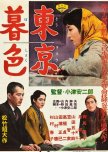
Quality relationships are the biggest impact on happiness
Tokyo Twilight (1957) was Ozu's last film in black and white. It is a family drama and is regarded as one of Ozu's darkest films. This is a film worth watching if you've already seen a few Ozu films and want to be 'completist' in your Ozu viewing. Otherwise, as a stand alone film selection, I don't recommend it for most folks.Considering the seasonal themes of many Ozu films, Tokyo Twilight features snow, so we are firmly in the season of Winter.
The issue for me, isn't so much the dark themes and plot outcomes, but rather having difficulty accepting Akiko - the distraught daughter who seems to have no luck in life. In some ways, I felt the character's presentation wasn't believable and, as a result, had difficulty empathizing with this character. The two Ozu films that I've seen the actress, Arima Ineko, star in, I was irritated with her characters including Akiko. Ms. Arima's characters present overwhelmingly as stubborn, impatient, and lacking in social skill and regard for others. Perhaps that was intended by Ozu, or perhaps, it was overacted to some extent. In any event, the filmgoer is supposed to feel for Akiko, who has no close relationships to lean on for true support.
Setsuko Hara, on the other hand, plays the depressed older sister role of Takako. She was terrific to watch in this film, and I gained a greater appreciation of her skills after being accustomed to her bubbly, smiling, 'pure' daughter roles in other Ozu films. The subtle sorrow that Ms. Hara projects in Tokyo Twilight is convincing and masterful.
Ozu films can, as an overall style or scheme, be not too explicit about plot. There are ellipses or gaps in the plot. This leaves some of the story plot or character feelings open to interpretation. For many Ozu films, this works well; viewers intuit characters' thoughts and feelings because they're so real and relatable that we don't need image or word to confirm what's going on. However, in Tokyo Twilight, these gaps in plot are more confusing, on average, than other films. It might take some 'studying' after watching the film to come to a full understanding of the plot and themes. I suspect many viewers are not willing to do that, which is why I, again, only recommend this film for the Ozu 'completist'.
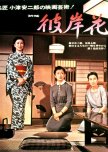
Exploring the gap between Parent and Child
Equinox flower (1958) was Ozu's 48th film (of 53) and his first feature film in color. As with all Ozu films, Equinox Flower is a family drama.This film focuses on an upper middle class family in conflict; that is the daughter's decision to choose a marriage partner without consulting parents and a parent's view they should be involved in the decision. It might seem filmgoers would automatically side with the daughter in this story, but many will sympathize with the old-fashioned father to a certain extent. If this topic interests you, do watch the film and be aware of your perceptions, thoughts, feelings, and judgments.
One side note, is that the title, "Equinox flower", is also the common name of an Asian lily - Lycoris radiata; it is also called 'red spider lily', 'red magic lily', and 'corpse flower'. It is a beautiful red flower (look it up online!). This flower blooms in August-September, close to the Autumn Equinox. The flower has some cultural relevance to death. Consider what element(s) of the film may symbolically link to this flower. Does it represent the decay/death of a parent-child relationship when the child marries and becomes 'independent' from parent?
This film primarily explores the gap or 'conflicts' in perception that parents and children have of one another. The following 2 script selections represent that gap.
Says one Mother to another mother:
I'm doing all I can,
but Yukiko (the speaker's adult daughter) just keeps telling me
to leave her alone and not bother her.
Children are so ungrateful.
Our children are the same.
It must be the same everywhere.
Says one adult daughter to another adult daughter (--):
I envy you, Setsuko.
Your parents aren't like my mother.
They're so understanding.
--I wouldn't be so sure of that.
They're not like Mom at all.
She always goes on and on
and never gets to the point.
--She has an interesting way of talking.
Yeah, too interesting, if you ask me.
Setsuko, we should team up.
--What do you mean?
You help me
when my mother's being unreasonable,
and I'll do the same for you.

Ozu's most accessible film; a great first film to start with
Yasujiro Ozu, along with his writing buddy, Kogo Noda, collaborated on 27 films. Ozu, alone, made 53 feature films. Good Morning was Ozu's 49th film, and 2nd film in color. This is one of his 'later' films.Good Morning (1959) is easily one of the most accessible films for the new Ozu filmgoer. It is in audio, color, and, at 94 min. run time, very digestible. Compared to other Ozu films, it feels less 'heavy', quicker in pace, and is visually stimulating; older Ozu films (especially the black and white films) have a more static visual presentation. There's lots of explicit and implicit comedy in Good Morning, and the music is more 'modern' compared to earlier films. Furthermore, Good Morning leans heavily on the performance of children, including a cute young child who does an incredible acting job. There's something to like in this film for everyone. This is a fine film to watch for a family with children.
As with all Ozu films, this is a family drama. The plot and themes cover the dynamics of an upper middle class household (father, mother and their two young sons). The film also explores the dynamics of neighborhood relations and intergenerational dynamics. The challenges of raising children are explored as are the differences in socioeconomic statuses of neighbors. Compared to many other Ozu films, which focus on adult characters, Good Morning features well-developed children characters. The children actors in this film, in fact, steal the show.
The portrayal of happy-go-lucky children in Good morning, may be a symbolic decision. In 1959, Japan would have had young children (age 1-15) with little to no living memory of WWII. Instead, the children of Good Morning are concerned with television, watching sumo and baseball, and having fun with friends. The adult parents, conversely, are consumed with work and rebuilding the nation from its WWII defeat; they seem too busy to be strict with their children for long, giving in to demands for consumer pleasures.
While this film may not be as 'emotional' or as 'deep' as other Ozu films, it is still a very thought provoking film. For myself, personally, this film made me want to read more about Japan's modern history.
Good morning is a very good place to start for the first-time Ozu filmgoer and is appropriate for children of middle-school reading ability.
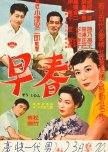
Is Spring muddy everywhere? Are salary workers resigned everywhere?
Seeing the run time at 2hr 24 min, I was concerned this film might not hold my interest or languish in pace. Nothing to fear, the film held my interest all the way through. It's remarkable how Ozu can keep such a low pulse without putting me to sleep. In fact, I am stimulated by his films. Early Spring is no exception and was an excellent representation of Ozu's oeuvre.It seems Ozu covered riskier material in this film compared to earlier ones. The main themes covered were infidelity and the malaise of salary workers. While infidelity was addressed more often and explicitly, I believe the malaise of the salary workers was the deeper undercurrent of the film, despite its implicit narrative. There are common themes that are touched on less frequently or explicitly, such as industrial development, postwar grief, and gender roles in society (i.e. the rapid progress of strong, modern young women).
Sugi and Masako play their roles very well. The scene where Masako confronts Sugi on his transgression is quietly intense. Not even yelling or the breaking of plates could have amplified that intensity. It's difficult to tell what drives their broken relationship. Is it the death and grief of their child? Is it something problematic interpersonally with no external factors mediating the relationship issues? The filmmakers' ambiguity forces us to insert a personal interpretation to explain their circumstances.
Goldfish is less believable as a character, but so distinct and lively that I could not help but enjoy her performance. She symbolizes the salary worker's distraction from disillusionment, a chance to forget about the dull pain of repetitive boredom. One of the male coworkers, in a conversation on the suspicions of their colleagues' affair, comments that he disapproves of it, but is also envious. It might not be Goldfish, specifically, that is desired, but rather the excitement that comes with it. Many Salary workers desperately dream of something better beyond their monotony. Even the opportunity to gossip about coworkers fulfills that itch.
The support cast is a menagerie of workers, company workers, pub-restaurant owners scraping by, and so forth. It doesn't really matter what their jobs are; they're the same, just grinding, cooling themselves with hand fans, gossiping, and moving the cogs of society along.
The salary worker's life of drudgery is one I need not describe in detail. In fact, the following exchange from the film (with a few lines removed to streamline the point) says it all:
That's the fate of the salaryman
Only company directors have autos (everyone else crams on trains)
Sometimes I just hate my work
But it's difficult to change
Worse if you have children
Sure you still have your dreams
But a free life....
I'm a salaried man
Consider this selection of script from a 1956 Japanese film. If you're reading this review, chances are you are not Japanese nor are you 80 or 90 years old. Can you identify with those lines? I would guess many of us know intimately what the lifestyle of a salary worker is like. It's remarkable how cyclical and universal human life can be despite distance in culture, geography, and time/eras. Ozu isn't famous only for the fetishist filmmakers. His films are very relevant in this era for the common people. Things have changed on the surface, but the undercurrent of the salaried lifestyle is still going strong.

"To lose your children is hard, but living with them isn't always easy either. A real dilemma."
Tokyo Story is the third film of the loosely connected "Noriko Trilogy" and probably the most well known and well-regarded by critics. Family and societal themes are explored extensively in this film as was the case in Late Spring (LS) and Early Summer (ES). Tokyo Story (TS), perhaps, leans a bit more on societal changes in response to the post-WWII industrial boom. The younger generation, clearly, is consumed with work and family matters play second fiddle. In LS and ES, there are societal changes, but the social world is slow paced and lazy as if it is in stupor from the recent war tragedies. In TS, the social world is at a frenetic pace; folks are concerned about getting seats on trains; messengers rush about to deliver telegrams; and hot spring hotels - places typically associated with relaxation - are conveyed as rowdy gambling denizens.Although I may have disapproved of some of the character temperaments in LS and ES to a mild extent, TS introduced the first truly irritating character - Shige who was the eldest daughter of Shukichi and Tomi. Ozu's characters and plots in the Noriko Trilogy tend to be subtle and restrained. Shige's rudeness and obnoxiousness was too plain. And while I don't mind that the character has those traits, their 'in the face' presentation of those traits was distracting. When I read descriptions of TS, reviews, or commentary, I noticed there is an over-generalization that the children in this film did not care about their parents. That's simply too black and white. A close inspection of the characters reveals that the circumstances of the busy children and aging parents are much more complex. In fact, the filmmakers utilize Noriko to elucidate these complexities by asking Noriko to explain to Kyoko, the youngest daughter, the nuances of the family's inter-generational dynamics. Personally, I feel the commentary on family dynamics presented in TS would be have been more effective, and certainly more enjoyable, had Shige been presented as a nuanced character.
Noriko, while still a praiseworthy character in TS, felt the least compelling when compared to Noriko in LS and ES. In TS, her filial piety towards her mother and father in-laws felt slightly forced, even inauthentic. Perhaps the filmmakers and viewers of LS and ES were accustomed to Noriko's temperament across films and would have no problem with this presentation in TS. Yet, viewing Noriko in TS without those prior associations, I stand by the presentation as weaker. Even more so since Noriko of TS was not living near her in-laws nor was she in frequent communication. Playing up her filial piety in contrast to the blood children's selfishness felt inauthentic. It was an unfair presentation of the children to beat us over the head with a point where nuance would have served better.
Despite TS's prestige, I enjoyed this film the least of the three Noriko films. I found myself more conscious of the slow pace of TS compared to LS and ES. It is still a strong film, but it makes me wonder why so many folks seem to place TS at the top of the Trilogy. There are, from a filmcraft perspective, some marked improvements. In TS, the music right off the bat signalled greater complexity and maturity compared to the earlier films. Camerawork was steadier and more varied. There are probably other 'filmmaker' improvements that escape the average viewer's eye. So, I suspect that filmmakers appreciate these advances in craft and rate it highly. But for me, as an average film viewer, the quality of narrative and impact to self was a few steps beyond my viewings of Late Spring and Early Summer.
Lastly, the setting of Late Spring and Early summer was clearly Kamakura; in fact the opening scenes place us at Kita-Kamakura station (a place I've been to). I enjoyed that specificity of location. I could even look up what Kamakura looks like at present if I want. In Tokyo Story, the story took place, loosely, in Tokyo. Well, that's a pretty large area and can mean many places depending on the cultural context. In short, I would have appreciated greater details about the locales of the characters, especially since Shukichi and Tomi were being 'shown around' Tokyo. Yes, we know they go to Akami, which is outside of Tokyo, but within their Tokyo adventure, we get no locations.

The weight of family expectations, oh how heavy.
Although the three Ozu films {Late Spring, Early Summer, and Tokyo Story} are not connected in story, we see many of the same actors, and the female leads -all named Noriko - are played by Setsuko Hara. Across the three films, we experience similar family and societal conflicts and a consistent visual style, film pace, and sleepy music. There's a familiarity and continuity despite all three films being distinctly different stories. The films were made in in close chronological proximity - 1949, 1951, 1953. They're appropriately considered the "Noriko Trilogy" for that connectedness we feel when watching the trio of films.The overall pace of this film is andante (moderately slow). So when there are scenes of anger or lightning quick decisions, we feel those scenes powerfully. Noriko's spontaneous decision to accept an impromptu marriage proposal is profound, shocking, confusing. Can this compliant daughter really act in such an individualistic way is what we wonder. But let it sink in a bit more, and it's all too obvious that the decision makes sense. We're given clues about the 'cost' of social obedience. Noriko's unkind brother and forlorn sister-in-law are moving along with their arranged marriage as puppets in a play. Noriko has enough experience with the type of man she doesn't trust; her brother is unkind and controlling; her boss is flirty; her suitor, Mr. Manabe, sends a private investigator to research her - wouldn't we feel a bit slimy after that? The filmmaker teases us by not even showing us what Mr. Manabe looks like; who cares if he's rich and good looking? Noriko's selection of Yabe is somewhat by process of elimination. She even argues that she doesn't 'love' him and instead 'trusts' him. He's the one to accept her individuality, the one she can lean on for support rather than take instructions from.
Noriko's independent decision, without consulting family - or even the groom! - is symbolic of a change or breakdown in the social order. Post WWII, Japan was grappling with many societal changes. Even the films that Ozu made were subject to intense censorship by American authorities. It's even comedic that Ozu chose a young woman making a choice for themselves as the symbol for social order breakdown; how dare a woman do that! I suspect Ozu's sympathies lay with Noriko, with individuals, and felt it was important to highlight individuals' livelihoods. When people are lumped into groups, we may come away with dangerous biases and generalizations, not only beliefs about others but also beliefs directed inwardly. Certainly, many Japanese did not want to fight in the wars, but were forced due to the social order; it was not acceptable to go against the rise in nationalism. Ozu, it seems, welcomes this social order breakdown. Yet, in that breakdown, there are things to lament, things that are lost. Noriko will move away from her family; her parents will move away as well to live with their elderly uncle. Like a wistful wind, the family is dispersed to far places in Japan.
Many of the actors in the Noriko films play different characters, roles, with wide ranging temperament. Chishu Ryu is a gentle, middle-aged father in Late Spring, a brusque and dominant elderly brother in Early Summer, and a resigned grandfather in Tokyo story. It's in watching his range in all three films where we fully understand the actor's skill, and long-lasting collaborating with Ozu (he appears in 52 of 54 Ozu films and featured in over 160 films and 70 television productions). Chishu's forceful manner in Early summer is quite enjoyable because of the contrast to other roles. It's a breath of fresh to see him in something other than a docile, fatherly figure. Setsuko Hara, on the other hand, maintains a continuity in character and affect. There's a stubborn purity to Noriko; when her purity survives, it is satisfying and comforting, but when it is broken, it is heartbreaking.
What exactly did Noriko represent to Ozu, Japan, and to the broader film audience of the of 1940s and 50? What does Noriko mean to us now in 2023? This is, in part, the beauty of the Noriko films, that it elicits so much reflection at a broad, universal level.
A loaf of bread loses its dignity in this film.
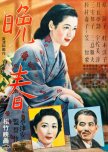
Delicate Spring makes way for powerful Summer
What's remarkable about this film is that it appears completely unremarkable. The pace is slow, there's no action, the characters look lethargic, and the dialogue and cinematography involve us with mundane matters and scenes; the music is painstakingly slow - even a tune we all know well, "Wedding March", is slow and somber; there is virtually no excitement; even the trains move slow. It is remarkable how this film kept me emotionally and intellectually engaged for ~2 hours and prompted ample reflection after the film ended.Since this film is a part of the classic film canon, you can easily look up professional critics' and filmmakers' commentary. Consider that so many have put this film in their top 100 films of all time list; that's not an easy list to make! However, I'll share a few thoughts on how I connected with the film.
Consider the title, "Late Spring". The film was inspired by the short story, "Father and Daughter", by Kazuo Hirotsu. The short story title is directly related to the film's characters and plot; we don't get many explicit clues that the story takes place during Spring, so the film title is more evocative than descriptive. So, why not call the film, "Father and Daughter"? I don't know the reasons the filmmakers chose "Late Spring" as the title, but its suggestion to think about the film metaphorically is quite effective.
Noriko and her father, Somiya, are delicate souls, and their relationship with one another is tender in love to an extreme. After father is told by daughter "no play until work is done", the father's impatient response of "go bring the tea" is the comical peak of his anger (if only tiger parents could study this scene). The impending transition of their relationship status from live-in daughter/dad to no longer living with one another signals a change in their 'season' as a family. Daughter and father were happily living in a delicate Spring. With Noriko's upcoming marriage, they quickly move to Summer.
Consider Spring, as a social metaphor, representing individuals' inner thoughts and desires. Spring is our most intimate selves. Like the ephemeral spring blooms of cherries and irises, our Spring selves bloom beautifully. But Summer comes roaring like a lion. Spring is never long enough for us.
Summer is the metaphor of group-level or societal thoughts, expectations, and values. Summer is powerful, (more) lasting (than Spring), and self-assured. Societal and group structures like work, school, and family ask us to 'grow up' and 'ripen' - be practical, be productive, is what society says to us. It's as if they say "Enjoy your spring blooming self, briefly, but not too long; we need crops to feed our society, so please get to work; we needs kids to keep our species going, so please get married; we know what's best so please do what we say".
Doesn't it always seem like Summer is rushing Spring? And Spring is too kind to overtake Winter?
As I watched this film, I was aware of my 'Spring' thoughts/feelings and 'Summer' thoughts/feelings. In summer mode, I bought what dad eloquently said about the cycles of life, how marriage is part of that, and father and daughter must move on from one another. That's the script of societies, of families, of 'normal' human relationships. In Spring mode, what dad says seems forced, manipulative, inauthentic. What's really wrong with Noriko living unmarried with father for the remainder of her days? It seems almost every character besides Somiya and Noriko are happy with the upcoming marriage, even relieved, as if the father and daughter's relationship was overripe and soon to rot. That's the summer thinking.
Many of the relationships in this film can be viewed, in the spring sense, as pure, intimate, and innocent. But switch to summer thinking/feeling, and those same relationships are now viewed as impure, vulgar, and lacking appropriate distance between expected social roles. Noriko's playful relationship with Mr. Onodera (father's friend), can easily be viewed either way; she's having a playful chat with someone she trusts or there's something inappropriate since their age gap is too great, and Mr. O shouldn't be playful with his friend's daughter since he was recently re-married; they even hang out and shop together without Dad's presence/knowledge -- Oh! The scandal! Our initial response to these scenes speak to what season our minds and hearts are in. If you're still not sure what I mean, consider the famous film by Studio Ghibli/Hayao Miyazaki, "My Neighbor Totoro". There's a scene with the father bathing with his two daughters. I'm certain many people will see this as a beautiful, tender, and loving scene, while others, no doubt, will watch uncomfortably believing this is inappropriate. Spring thinking vs Summer thinking is what I'm getting at.
In the final scene of "Late Spring", we're reminded of how precious Spring is to us, especially as we've weathered in life. At the film's end, we see Somiya peeling an apple by himself. His feeling of loss of something never to return is something we all identify with; the gravity of summer and society is simply too strong and much of our inner desires are squashed.
Pause to consider how universal this film is with its seasonal metaphor of loss. This film from 1949, from a country/culture few of us experience directly, is indeed remarkable.

